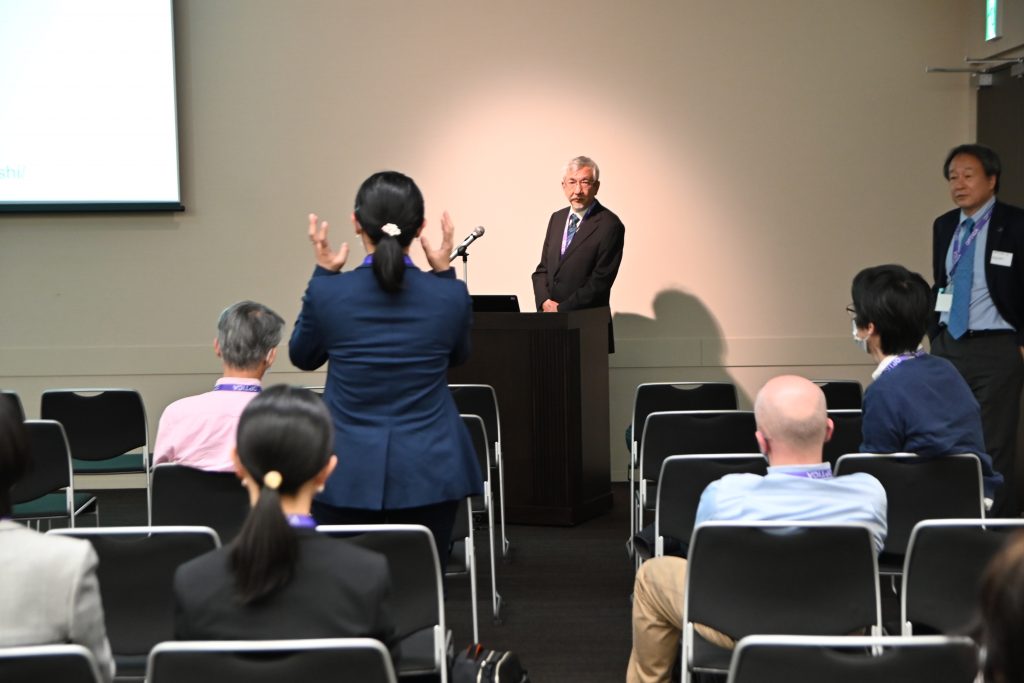Email Magazine
The Optical Society(OSA) (11/10/2021)
On November 4, the Optical Society of America (OSA) held an event in Tokyo to celebrate the change of its name to Optica, which was founded in 1916 as a regional organization in the U.S. Optica now has a worldwide membership. Satoshi Kawata, Chairman and President of Nanophoton (Professor Emeritus of Osaka University), will assume the position of Optica President next year. This event was also an experiment to see how we can overcome the time difference and hold an international conference in the world of COVID-19 disasters. Here is a report on the day of the event. (E-mail Newsletter editor-in-chief / freelance writer Takeshi Nemoto)

The name of this event is “Rebrand launch event”. It is a commemorative event for the launch of the new brand. In the U.S., Optica’s annual meeting, Frontier in Optics (FiO), was held from November 1 to 4, and the event was held in Japan to coincide with the last day of the annual meeting.
At the venue, more than 40 participants gathered one after another as a video of Optica’s CEO and Chairman explaining the background of the name change was played.
First, Chairman Kawata took the stage and thanked everyone for participating in the event, and then explained the purpose of the event. The language for the event is English.

“The purpose of the event is of course to celebrate the launch of the new Optica brand, but it is also an experiment to see if the so-called multi-hub conferencing experiment can work.”
“Currently, Optica’s annual meeting is being held in Washington, DC via an online meeting. I have been complaining that online meetings are very painful for people living in Japan, far away from Washington DC!”
“In this multi-hub conference, we will be meeting in Japan during the daytime, and people in the U.S. will be meeting during the daytime as well, so the audiences in the two locations will not be in one place, but they will hear live presentations by Asian speakers in Japan and recorded presentations by speakers in different time zones. Listen to recorded presentations by speakers in different time zones.”
“It is impossible to have a live discussion in a recorded presentation, but it is possible to have a discussion among the audience after the presentation. I’d like to try this experiment.”
The first presentation was “Fourier Transforms and Fourier Optics with Mathematica™” by Joe Goodman, Professor Emeritus at Stanford University. This is a recording of an online talk that started at 1:30 a.m. Japan time the night before and lasted about 50 minutes.

At the beginning of his presentation, Dr. Goodman said, “I regret that I cannot be here in person, but I am happy to be here virtually. I would like to thank Professor Emeritus Kawata for giving me this opportunity through the recording.” The Japanese participants listened to the lecture.
The next live presentation was given by Professor Hiroshi Yoshikawa of Nihon University. The title of the presentation was “Interactive Generation of Full Color 4K Image Hologram,” and it introduced his research on how to reduce the time required for hologram generation by using commercially available computers instead of specialized hardware. It is said to have been possible to create holograms in as little as 50 milliseconds, instead of the two hours it would take if calculated strictly. This was a live presentation, so there was a question and answer session with the audience.

After that, a video message delivered by the CEO was played and a group photo was taken before moving on to the reception. The venue was filled with people chatting, and many participants were enjoying face-to-face interaction while paying attention to infection control.
